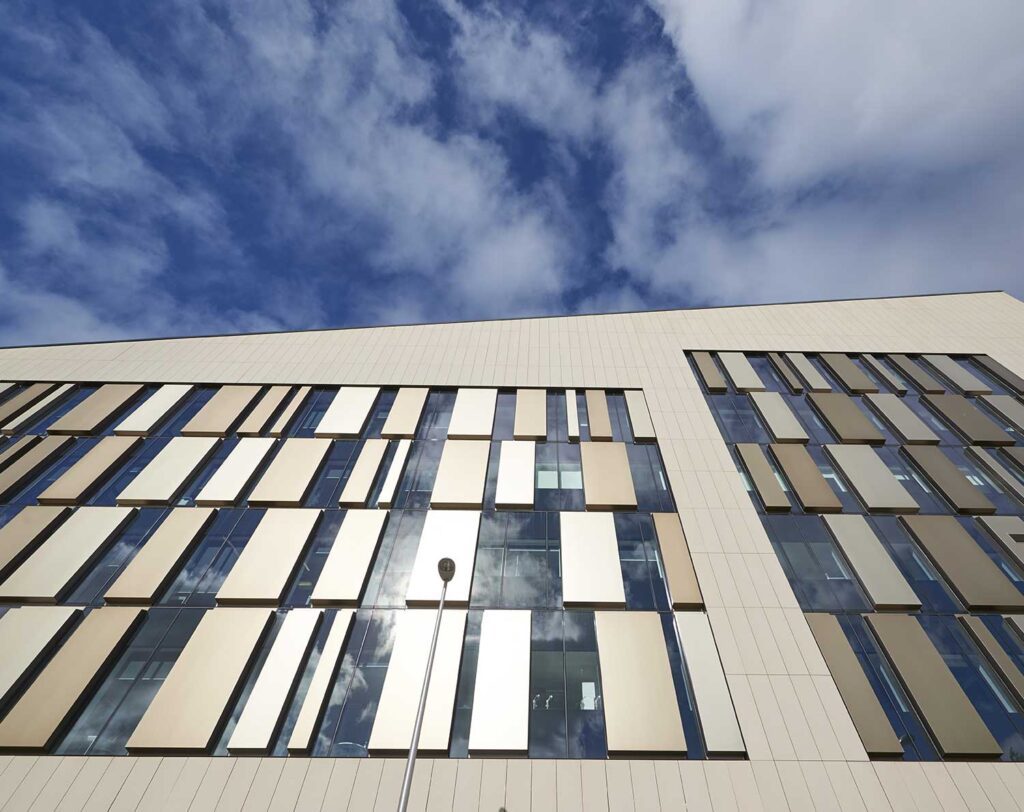The Benefits Of Petrarch Open-Joint Rainscreen Cladding Systems

Systems for rainscreen cladding are still in demand, largely because of the advantages they provide in terms of managing rainwater. The outer cladding and the primary wall structure are separated by a cavity in the rainscreen cladding design. Architects and designers are increasingly using rainscreen solutions because the joints of these systems have been sealed to reduce the possibility of water penetration into the drainage cavity.
The connections between the rainscreen panels in open-joint rainscreen cladding systems are left open on purpose to generate openings for air to enter and exit the wall assembly. Open-joint rainscreen systems allow air to move more quickly than closed-joint rainscreen applications. Since more water may drain far more quickly and better airflow and drying are encouraged behind the cladding, open-joint cladding is more effective.
The ideal method for creating an energy-efficient building is to use engineered stone rainscreen panels in all rainscreen applications like those made by Petrarch. The main component of Petrarch Engineered Stone Rainscreen Cladding is recycled marble that has been reconstituted rather than thrown away. Petrarch Panels offer 4 different textures, 16 standard colors, and an unlimited number of custom colors, molds, images, and patterns.
Open-joint cladding systems, which combine continuous insulation with water-resistive/air barriers, require extreme water and wind protection. Several open-joint cladding options combine the insulation layer with a second weather-resistant barrier to conceal the insulation layer. Weather-resistant barriers (WRB) prevent outside water from penetrating building materials. They work like the outside shell of a structure, keeping liquid water from leaking through but allowing water vapor to escape.
The performance of open-joint rainscreen systems is enhanced by mineral wool continuous insulating. The foundation wall brackets of the building are insulated with mineral wool. Mineral wool not only provides excellent fire protection but also reduces energy use and muffles sound. Additionally, mineral wool is water-resistant, inorganic, and mold-resistant.
The continuous insulation (ci) and the actual cladding are to be laid in front of and behind water-resistive barriers. The WRB needs to be tough enough to endure exposure to harsh weather conditions and protracted UV rays in the open-joint application. The ideal barrier should be extremely vapor-permeable in addition to being water-resistive. This will allow moisture in the cavity to diffuse out quickly while safeguarding the insulation from potential harm caused by moisture intrusion.
The top tier of security is provided by designed stone rainscreen panels from Petrarch. Petrarch engineered stone rainscreen panels have stood the test of time, proving themselves resistant to all of the elements, impact, graffiti, and vandalism.
We hope that this article gives you a better idea about the benefits open-joint rainscreen cladding systems. Please contact us if you have any queries.
